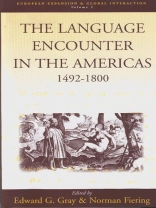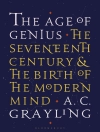When Columbus arrived in the Americas there were, it is believed, as many as 2, 000 distinct, mutually unintelligible tongues spoken in the western hemisphere, encompassing the entire area from the Arctic Circle to Tierra del Fuego. This astonishing fact has generally escaped the attention of historians, in part because many of these indigenous languages have since become extinct. And yet the burden of overcoming America’s language barriers was perhaps the one problem faced by all peoples of the New World in the early modern era: African slaves and Native Americans in the Lower Mississippi Valley; Jesuit missionaries and Huron-speaking peoples in New France; Spanish conquistadors and the Aztec rulers. All of these groups confronted America’s complex linguistic environment, and all of them had to devise ways of transcending that environment – a problem that arose often with life or death implications.
For the first time, historians, anthropologists, literature specialists, and linguists have come together to reflect, in the fifteen original essays presented in this volume, on the various modes of contact and communication that took place between the Europeans and the ‘Natives.’ A particularly important aspect of this fascinating collection is the way it demonstrates the interactive nature of the encounter and how Native peoples found ways to shape and adapt imported systems of spoken and written communication to their own spiritual and material needs.
Tabella dei contenuti
Preface
Norman Fiering
Introduction
Edward G. Gray
PART I: TERMS OF CONTRACT
Chapter 1. Babel of Tongues: Communicating with the Indians in Eastern North America
James Axtell
Chapter 2. The Use of Pidgins and Jargons on the East Coast of North America
Ives Goddard
PART II: SIGNS AND SYMBOLS
Chapter 3. Pictures, Gestures, Hieroglyphs: “Mute Eloquence” in Sixteenth-Century Mexico
Pauline Moffitt Watts
Chapter 4. Iconic Discourse: The Language of Images in Seventeenth-Century New France
Margaret J. Leahey
Chapter 5. Mapping after the Letter: Graphology and Indigenous Cartography in New Spain
Dana Leibsohn
PART III: THE LITERATE AND THE NONLITERATE
Chapter 6. Continuity vs. Acculturation: Aztec and Inca Cases of Alphabetic Literacy
José Antonio Mazzotti
Chapter 7. Native Languages as Spoken and Written: Views from Southern New England
Kathleen J. Bragdon
Chapter 8. The Mi’kmaq Hieroglyphic Prayer Book: Writing and Christianity in Maritime Canada, 1675–1921
Bruce Greenfield
PART IV: INTERMEDIARIES
Chapter 9. Interpreters Snatched from the Shore: The Successful and the Others
Frances Karttunen
Chapter 10. Mohawk Schoolmasters and Catechists in Mid-Eighteenth-Century Iroquoia: An Experiment in Fostering Literacy and Religious Change
William B. Hart
Chapter 11. The Making of Logan, the Mingo Orator
Edward G. Gray
PART V: THEORY
Chapter 12. Spanish Colonization and the Indigenous Languages of America
Isaías Lerner
Chapter 13. Descriptions of American Indian Word Forms in Colonial Missionary Grammars
Lieve Jooken
Chapter 14. “Savage” Languages in Eighteenth-Century Theoretical History of Language
Rüdiger Schreyer
Select Bibliography
List of Contributors
Index
Circa l’autore
Edward G. Gray is Assistant Professor of History at Florida State University.












